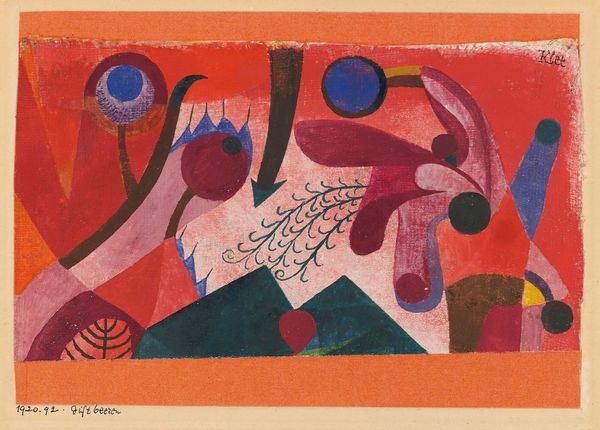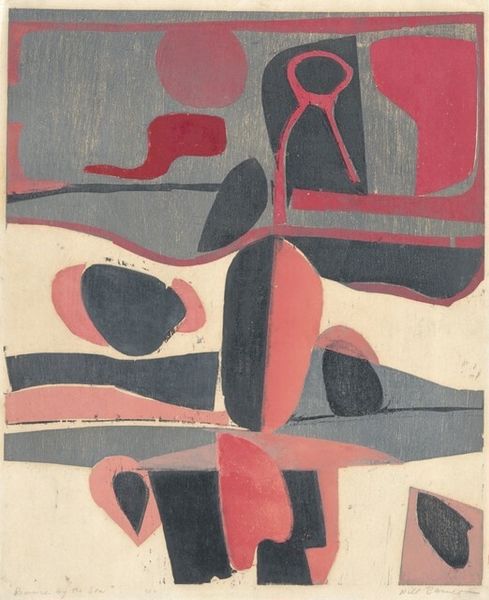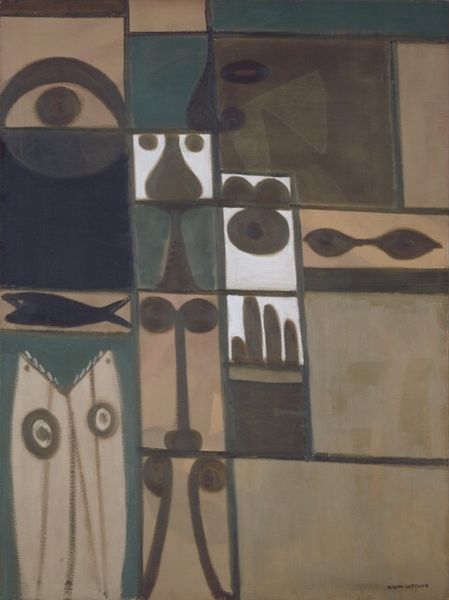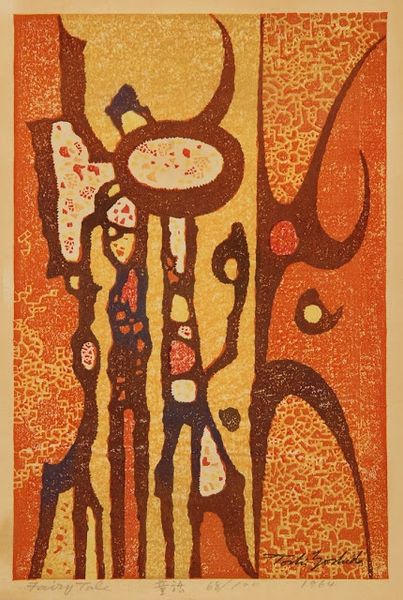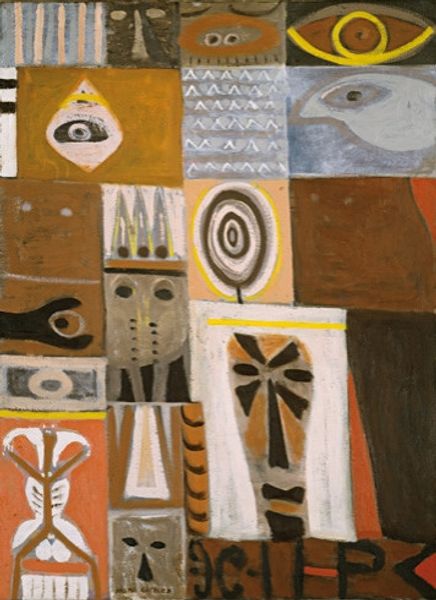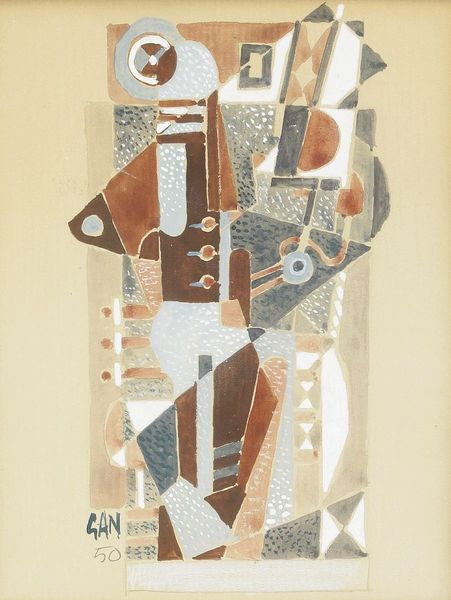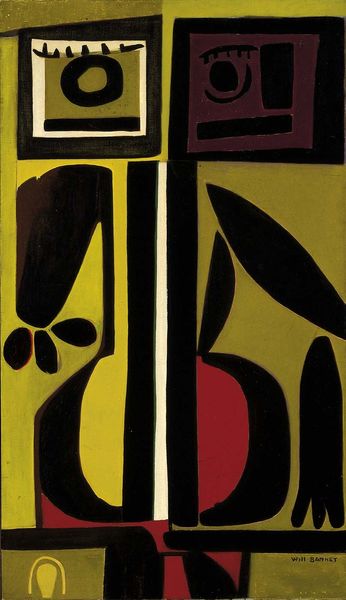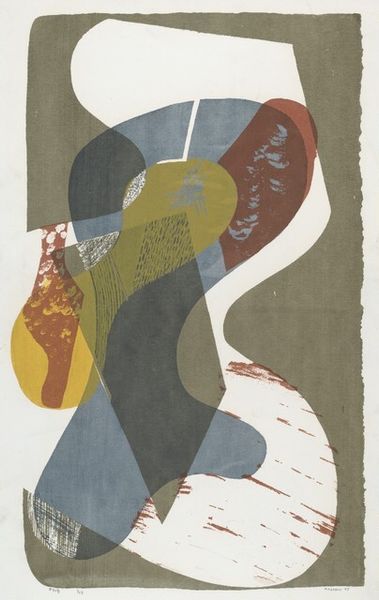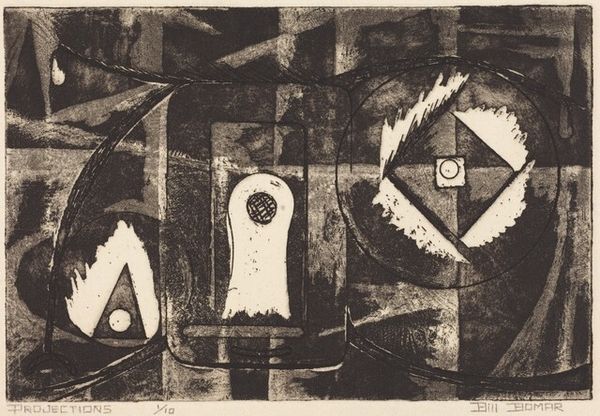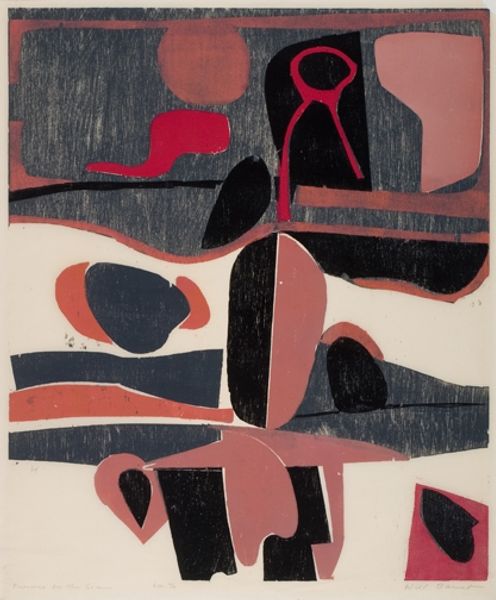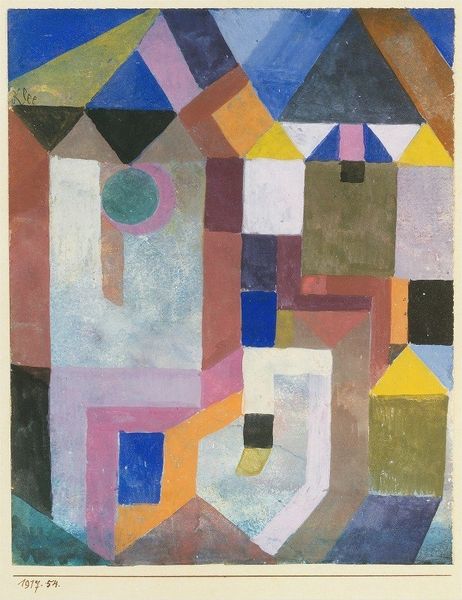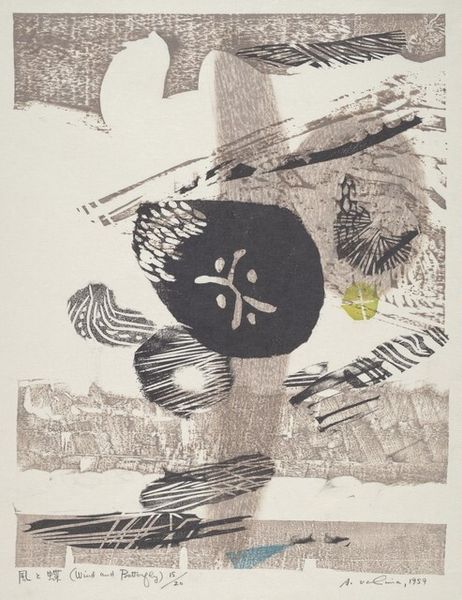
mixed-media, print
#
mixed-media
# print
#
geometric
#
abstraction
#
modernism
Dimensions: image: 250 x 174 mm sheet: 298 x 234 mm
Copyright: National Gallery of Art: CC0 1.0
Curator: Before us, we have "Clock," a mixed-media print created by Ethel Spears between 1950 and 1953. What strikes you first about it? Editor: Well, immediately, it's the warm color palette and the juxtaposition of hard geometric shapes with organic textures that intrigue me. There's a mechanical element fighting with a sense of grounded earthiness. It almost feels like a dream about industry. Curator: An apt observation. Spears' work often existed at the intersection of abstraction and the everyday, influenced by the prevalent modernist styles of the mid-century. "Clock" plays on the mechanization of modern life but also acknowledges it's ever present rhythms. Editor: Exactly. And the clock itself, fractured and reassembled, seems to represent how modern life has broken up our perception of time. There is almost a symbolic reference to time in the use of the clock itself and also a gear, almost as a representation of memory and the past. Also I cannot help but to focus in the "1" that resembles a person sitting at a table! It's a bit surreal, don't you think? Curator: Indeed! The iconography seems designed to disorient, yet subtly reminds us of daily rituals. The limited color range underscores this duality; while muted, they provide structure. It echoes broader debates in post-war America regarding technology's role in shaping our lived experience and collective identity. It might represent an assembly line itself, how a clock assembles, one piece by one piece, in our lives. Editor: You're right. The choice of colors and shapes work well together with these possible representations. And as a print, reproduced en masse, the work implicitly touches on the democratization, or perhaps even commodification, of time. It's also, clearly, aesthetically aligned with Modernism. Curator: Precisely. Spears was active in Chicago's art scene, advocating for accessible art which explains its relationship with its audience. Her work encourages reflection, not only about how technology shapes us, but our ability to alter society. It can serve both as a cultural symbol and personal meaning. Editor: And perhaps, its enduring relevance lies in how skillfully Spears intertwined these multiple perspectives, making us question, or at least think about the relationship of the clock ticking forward as society and ourselves move along with it. Curator: A potent commentary woven into seemingly simple forms. The magic lies in seeing multiple messages!
Comments
No comments
Be the first to comment and join the conversation on the ultimate creative platform.
